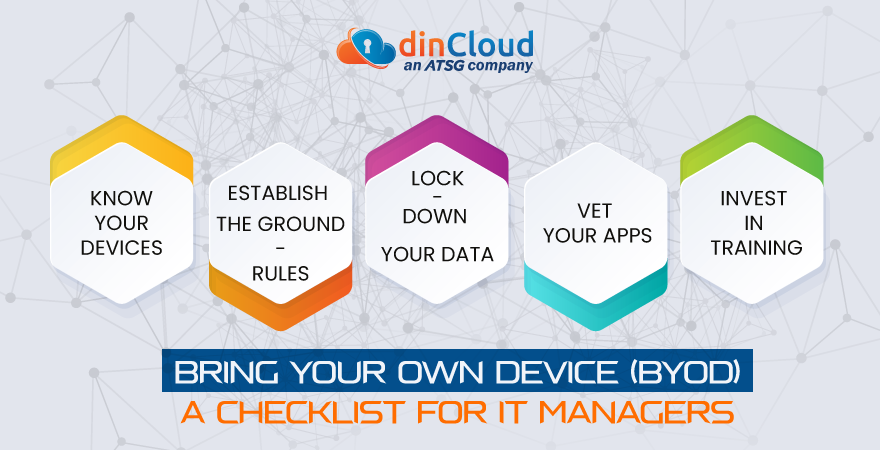The rising Bring Your Own Device (BYOD) movement and the consumerization of IT have left many organizations with outdated IT policies, which don’t support an agile workforce by enabling them to work from anywhere, at any time, using any device. Several debates about embracing BYOD in IT policy ended up on ‘security’ concerns. Yes, you need to protect your company’s data – but it’s no longer the case of protection or freedom. With a forward-thinking IT policy you can have both freedom and security.
Is your IT policy holding your company and your employees back from embracing BYOD? If so, use this checklist and start building an IT policy that embraces the future and protects your business.

1. Know Your Devices
Establish which devices you are ready to support. Do your homework on which devices meet your security standards and let users know what they can and can’t use. Find out which devices have native enterprise management tools and which ones use third-party tools.
2. Establish the Ground-Rules
Do users know they might get their personal data wiped if their device is compromised? If users are working from their own devices, make sure they know the risks involved. Make this clear in simple terms, before they start using the device for work.
3. Lock-Down Your Data
Make security measures, like having a PIN or encryption, mandatory. Complete periodic security audits to help verify the safety of company data and assess any potential risks. Encrypt data where possible.
4. Vet Your Apps
Not all apps will meet your security standards. Determine which will help users in their work, without compromising company data. Set up an app lab and test them to see which ones meet your business needs. Find the right apps for you, and then recommend them to users.
5. Invest In Training
If you are embracing BYOD in your IT policy, you should take the time to train users in best BYOD practice. Give them the knowledge they need to protect company data and reduce the risk of having their devices compromised. You also need to facilitate community-based support. So it’s not just about training – it’s about building a culture that makes people collaborate better.
If your company lets employees bring their own devices to the workplace, you had better develop a formal BYOD policy that understands privacy rights and access rights for both employers and employees.
In this way, BYOD will become a genuine asset that can allow your employees to reach new levels of productivity.
For more information on our Hosted Virtual Desktop (HVD) and how it can supports BYOD, please visit our dinDaaS page or request information to speak with a cloud specialist.


